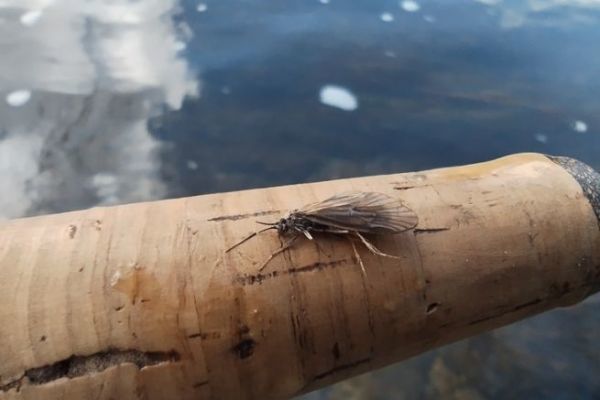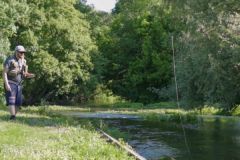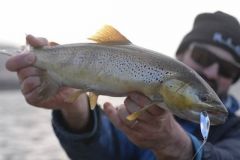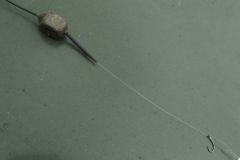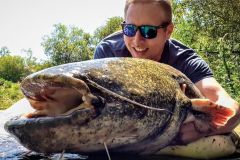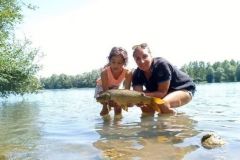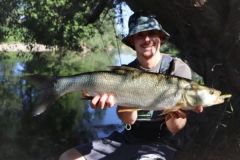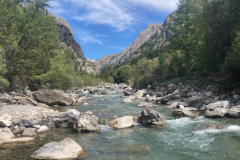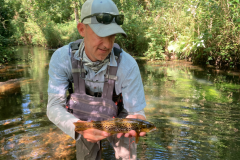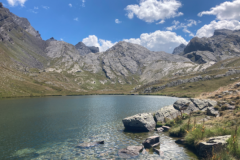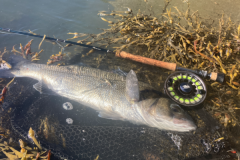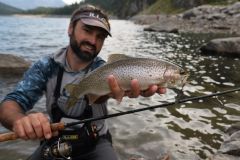Brachy or cul-vert
With its real name brachycentrus, this little sedge (trichoptera) is commonly called "brachy" or "green-ass". The latter name comes from the fact that the female has a green egg on the end of her abdomen.
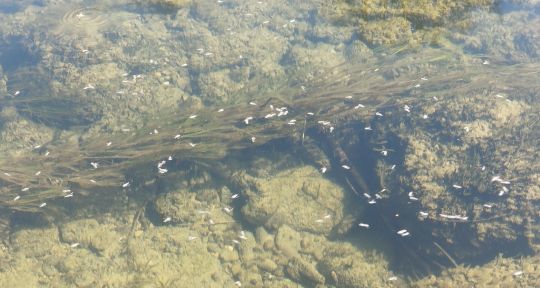
These insects emerge early in the day, sometimes into the early afternoon. The emergences can be massive, and are quite impressive to see. The old-timers say that there used to be so many insects on the river that you couldn't see the opposite bank!
This phenomenon generally occurs in mid-April and lasts for around ten days. Absence of wind, low water levels and sunshine are the ideal conditions.
Enjoy the show
During mass outings, you need to be patient and enjoy the show. That of the insects, but also that of the trout. In calm areas, they stay below the surface and feed in a highly mobile manner, as if driven mad by the sudden abundance. In these conditions, it's difficult to sting a fish. Our imitation finds itself lost in the midst of a dozen real insects. At the end of the emergence peak, the "brachys" become less numerous on the surface, and this is when our chances of catching them increase.
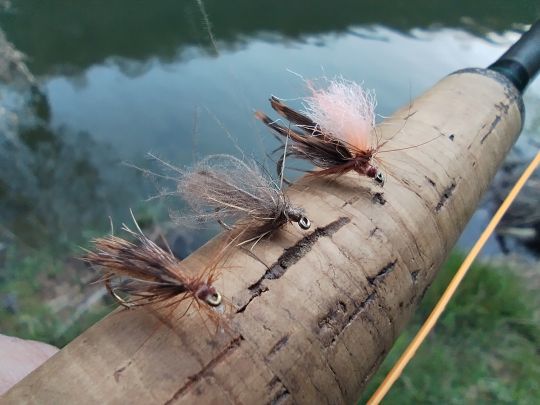
When emergence is over, there are no fish left in the open water. It's time to explore the edges, where insects accidentally fall. Also the "retournes", those edge zones well known to trout where the current swirls and collects dead insects.
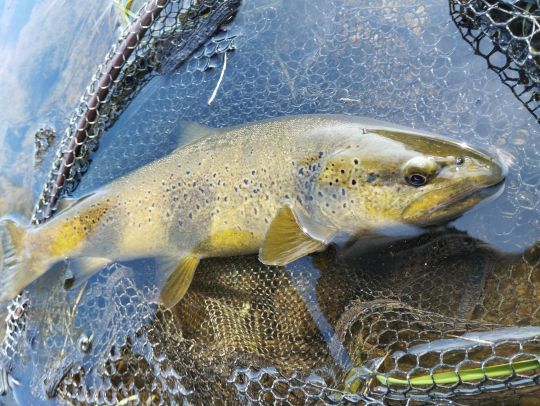
On the imitation side, a small sedge on a 16 or 14 hook is perfect. I like to use the bubble sedge, for example, or the woodcock rump sedge. Don't hesitate to use a visual tag for the angler, there's nothing worse than not seeing your fly.
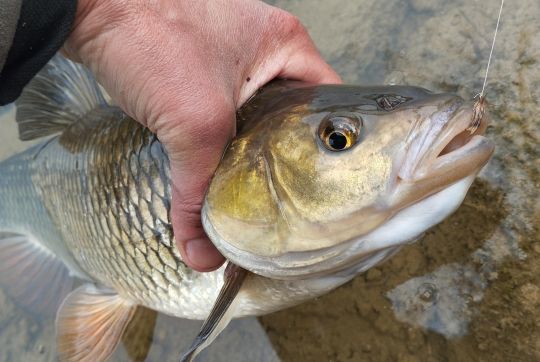
Of course, the trout are interested in this manna, but it's not the only one. Chub are also part of the feast.

 /
/ 